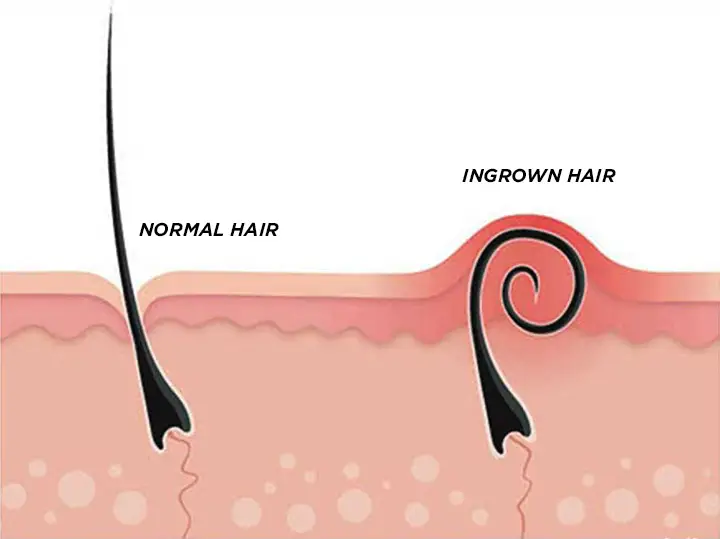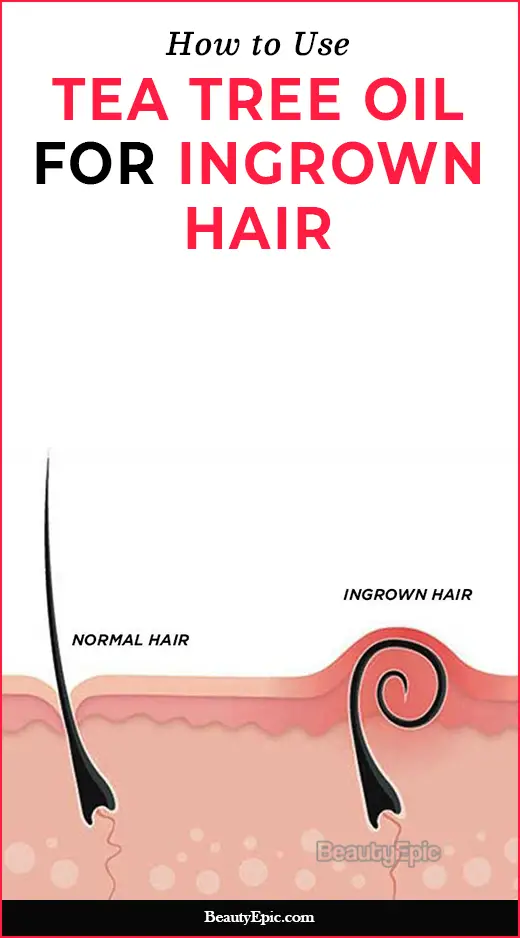
Important: This article is for informational purposes only. Please read our full disclaimer for more details.
Ingrown hair, as the name suggests, are hair that curl backwards and start growing inside the skin. This can be due to the clogging of hair follicles because of dead skin or due to shaving or waxing hair off the skin. Ingrown hair is usually very painful and causes red bumps on the skin. It leads to a lot of discomfort and causes irritation of the skin. Let us read to know how to use tea tree oil for ingrown hair.
Can Tea Tree Oil Help with Ingrown Hair?
- Due to the anti-inflammatory, anti-septic and anti-microbial properties of tea tree oil, it is useful in preventing infection that can be caused because of ingrown hair.(1)
- It also works as a muscle relaxant and analgesic and hence helps in relieving pain caused due to the presence of ingrown hair.
- Tea tree oil also helps in replenishing nutrients on the skin surface helping repair the damage to hair follicles caused by ingrown hair.
How to Use Tea Tree Oil for Ingrown Hair
Tea tree oil (TTO), also known as melaleuca oil, is an efficient natural product that can help in getting rid of ingrown hair. It has now gained immense popularity as a natural therapeutic. It is commonly used for treating skin and hair problems, one of which happens to be ingrown hair. Here we shall discuss its use in treating Ingrown hair.
1. Tea Tree Oil with Warm Water
You’ll need:
- 10-20 drops of tea tree oil
- warm water
Preparation time: 2 minutes.
How to do:
- Mix tea tree oil with warm water.
- Soak a washcloth and apply it on the area with ingrown hair.
Best time to apply: Morning and before going to bed.(2)
Repetitions: Repeat this process as many times as required till recovery.
[ Read: Benefits of Dry Brushing ]
2. Tea Tree Oil and Olive Oil for Ingrown Hair
You’ll need:
- 2 drops of olive oil
- 15 drops of tea tree oil
- bottle
- cotton swab
Preparation time: 5 minutes.
How to do:
- Mix both olive oil and tea tree oil thoroughly and put it in a dark bottle.
- Use a cotton swab and apply this mixture directly on the area with the ingrown hair.
Best time to do: Morning and Night.
Repetitions: This should be repeated till the ingrown hair problem gets cured.
3. Tea Tree Oil Massage for Ingrown Hair
Ingredients:
- 5 drops of tea tree oil
Preparation time: 2 minutes.
How to do:
- Properly wash the affected area with soap water.
- Apply 5 drops of tea tree oil on the affected area.
- Massage the oil onto the ingrown hair.
- Leave it for about 10-15 minutes, Then rinse thoroughly
Repetitions: Repeat the process twice a day for best results.
Tips and Precautions
- The concentration of tea tree oil is to be kept in consideration when using directly on the skin surface. It is always advisable to dilute it before topical use. Either water or topical oils can be used for diluting tea tree oil.
- Tea tree oil is toxic when taken orally and hence it is not advised to use concentrated tea tree oil when using it near the mouth.
- The strong camphor-like odour of tea tree oil can sometimes cause nausea and vomiting.
- If used in excess, Tea tree oil can cause the skin to dry to an undesirable extent.
Always use tea tree oil with a carrier oil like olive or jojoba oil to increase its absorption in the skin.
You Might Also Like:
- Baking Soda for Ingrown Hair
- Does Tea Tree Oil Get Rid of Boils?
- How to Use Tea Tree Oil for Fever Blisters
- How to Get Rid of Genital Warts with Tea Tree Oil
- Tea Tree Oil for Keloids – How Effective Is it?
Image:- 1
















